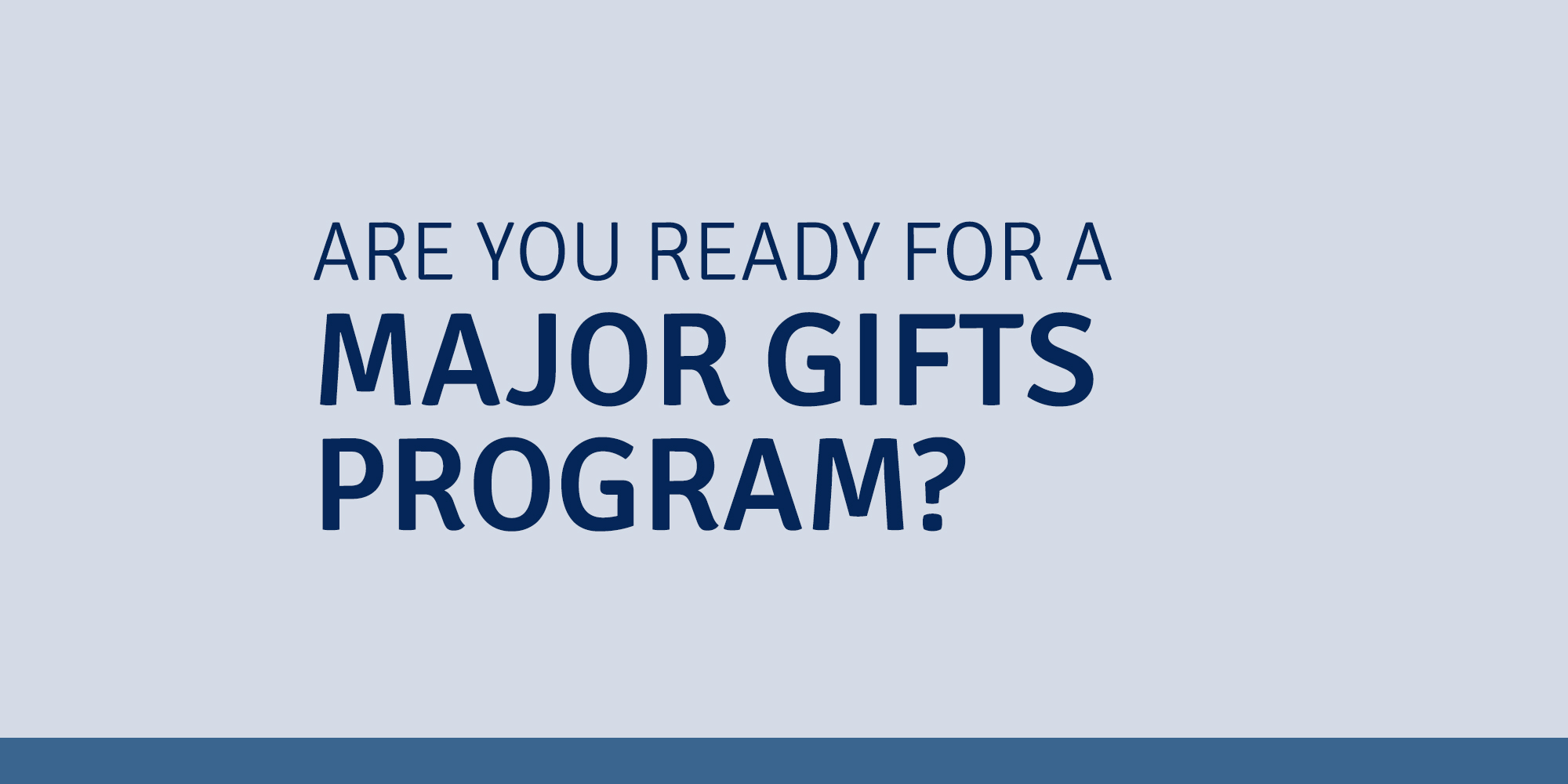Development Dilemma: When to Start a Major Gifts Program

Nonprofits that typically rely on revenue from special event fundraisers, grants, and direct mail programs may be unsure of how and when to develop an individual major gifts effort.
First and foremost, look at the maturity of the organization’s volunteer leadership. Are they prepared to start opening doors and making connections with potential major gift prospects? Are they willing to introduce the ED to possible new Board members? Support from the Board is crucial in any major gift effort—it is really hard to begin a major gift effort that is purely staff driven.
Budget is another critical factor to keep in mind. Is your organization willing and able to commit to the investment of moving ahead with a major gifts effort? It's a good up-front investment to draw on experience such as that provided by reputable consultants to assist in setting up a new major gifts program to bring you success in the long term.
Other prerequisites to consider: What is the case for major gifts? What is the minimum gift level for a major gift? Is there a qualified prospect pool (capacity, annual gift history, engagement at some level beyond giving)? Are Board and staff members willing to cultivate and solicit in person? Does the organization have a client relationship management system to help track and manage relationships? Is there ample budget to support training and an on-going program?
This is a lot to consider, but these questions will help your organization understand if the Board is committed and organizational resources are in place to embark on an individual major gift effort.
So how does an organization get started? A basic first step is identifying your organization’s top 30-50 individual donors. You may already know who these individuals are, but make a concerted effort to learn as much as you can about each individual, how they became involved with the organization, what staff or Board members may have a relationship with them, and what their interests are in. Keep in mind the donor cultivation cycle as shown below:

The donor cultivation cycle starts with the identification of the prospect. The second step, cultivation, involves developing activities that inform, interest, and involve the prospect with the organization. The cultivation process entails building relationships and engaging the prospects in ways that reflect their particular interests. Depending on the ask amount and method of asking, the cultivation process can require varying degrees of time, commitment, and involvement. Only after the prospect has been properly engaged with the organization are they ready to be solicited. The final step of the cycle, stewardship, allows for recognition and celebration of your donors.
Developing a major gifts effort is no easy task, but with planning and careful consideration of your nonprofit’s readiness, your organization can determine whether the time is right to start your major gift effort and diversify your fundraising program.


Comments
Questions or comments? Join the conversation!